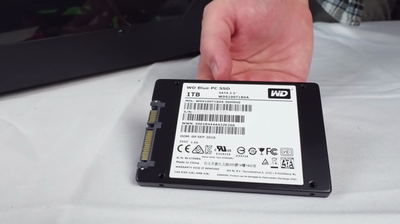
New SSD: my thoughts on the Western Digital 1TB Blue 3D NAND SATA SSD (2024)
My new SSD: the WD Blue 1TB SSD: reliability, system compatibility, efficiency, and older system performance.
Introduction
I recently upgraded my computer with a WD Blue 1TB SSD. The improvement in performance quite surprised me. As a heavy computer user for work and entertainment, a fast, responsive system is essential, not a luxury. After researching various options, I chose this SSD model to enjoy faster speed, better reliability, and potential longer battery life.
Some photos (click to enlarge)
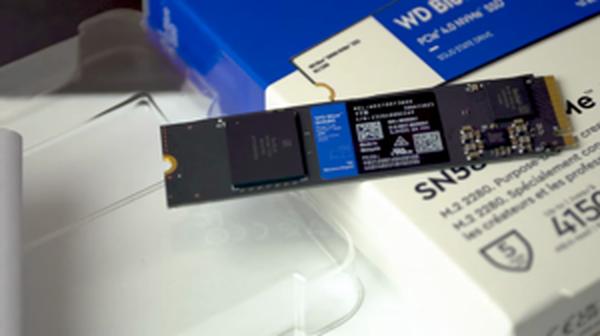
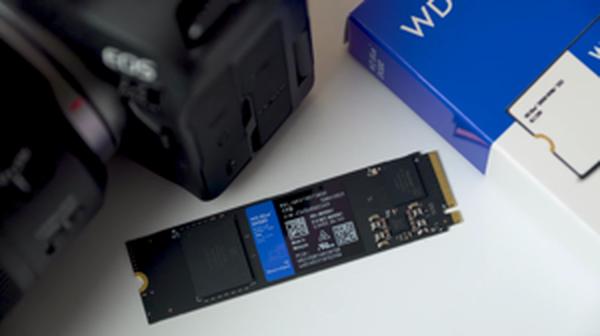
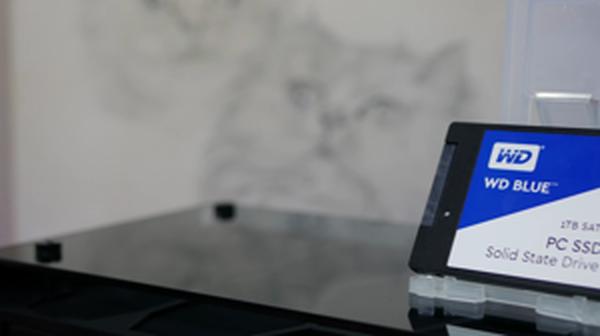
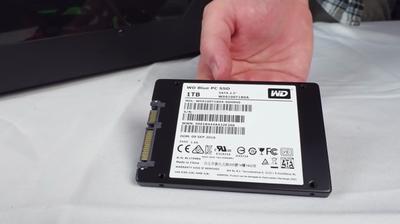
Specs of the Western Digital 1TB Blue SSD
- Release Year
- Brand
- Color
- Connectivity Technology
- Digital Storage Capacity
- Hard Disk Form Factor
- Hard Disk Description
- Hard Disk Interface
- Installation Type
- Special Feature
Prices
Enhanced Reliability and Performance
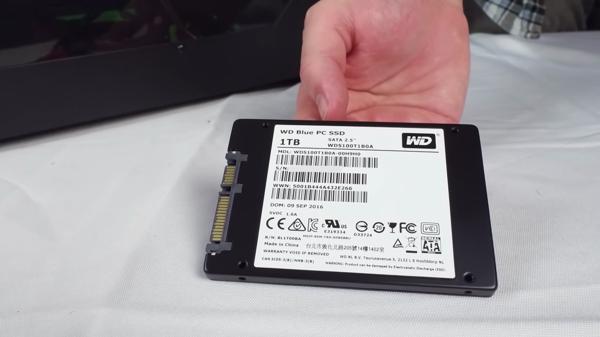
When I decided to upgrade my system with the WD Blue 1TB SSD, reliability and performance were at the forefront of my decision. Understandably, I had high hopes and expectations, driven by extensive research into the benefits of modern SSDs over traditional HDDs. My needs were twofold: extended longevity and the ability to handle demanding tasks without a hiccup.
Here's a glimpse into the core aspects that influenced my choice:
An impressive 1.75M hours MTTF (Mean Time To Failure), suggesting a long and stable lifespan.
Up to 600 TBW (Terabytes Written) for enduring heavy usage.
3D NAND technology contributes to improved energy efficiency and capacity potential.
Despite these notable features, it's prudent to touch on some concerns. While the drive boasts of lower active power draw at the 500GB capacity point, discrepancies in power efficiency could become more apparent as the drive reaches fuller capacities. Furthermore, the SSD's reliance on SATA tech limits its potential speed compared to PCIe alternatives—something that might not affect the average user but could be a bottleneck for power users with more specific, high-speed requirements.
My application of the SSD in my daily workflow has been fairly straightforward. Installation was a breeze, which isn't always the case with hardware upgrades, and the accompanying software for monitoring the drive was a valuable addition. The free Acronis True Image WD Edition software provided for drive cloning and data backup was a saving grace in transferring my old data to the new SSD, although the lack of clear instructions did add some initial confusion.
While Western Digital's reputation for quality can't be understated, the lack of a comprehensive manual did slightly dent the user experience. I had to rely on my own tech savviness and online resources to navigate through the installation and setup process.
On a more granular level, the read/write speeds have lived up to their advertised potential. My system now boots up in a fraction of the time it used to, and file transfers that once were time-consuming are swift and efficient. Although it's still early days to comment on long-term reliability, the initial indicators suggest that the WD Blue 1TB SSD will not fail on that account.
To sum up, while it's not breaking speed records compared to some NVMe drives, the WD Blue 1TB SSD presents a compelling case for those looking to revitalize an aging system with an improvement in reliability and day-to-day performance. The positive aspects undoubtedly overshadow the drawbacks, making it a wise investment for the regular user. As of now, the promise of a 5-year warranty does instill confidence that this drive will serve well into the future.
Compatibility and User Experience

When it comes to compatibility and upgrading your system with a new SSD, user experience can vary significantly. In my own transition to the WD Blue 1TB SSD, a few key points stood out making the shift largely a breeze with some minor hiccups.
Here's a quick rundown of my experience:
Ease of Installation: Swapping out my old HDD for the WD SSD was straightforward. The WD F.I.T. Lab certification ensures high compatibility across different computers, which was reassuring. However, the lack of clear documentation was a minor inconvenience.
Software Tools: The free downloadable software from WD for drive monitoring and data cloning is a substantial plus. It's easily accessible but requires a visit to the WD support site, which could have been better communicated.
Performance Boost: This SSD breathes new life into my system. From boot times to application loading speeds, everything feels snappier.
Reliability Concerns: Although I trust the 1.75M hours MTTF, only time will tell how the drive holds up to intensive use.
In using the drive, the benefits of enhanced responsiveness and faster system boot-up times cannot be overstated. Importantly, this upgrade has also been instrumental in reducing the active power draw, resulting in less frequent charges for my laptop. The sequential read and write speeds of up to 560MB/s and 530MB/s, respectively, have significantly expedited my data-heavy tasks.
Yet, this isn't to say the upgrade has been without its faults. The installation documentation could definitely improve, as navigating the WD website for the cloning software left me feeling that a more streamlined process could be possible. Moreover, the lack of an SATA to USB cable for cloning could be an oversight for those not already equipped with one.
Despite these shortcomings, the transition to the WD Blue 1TB SSD has been worthwhile. My concerns about capacity and longevity were quelled by the SSD's storage option that matches my previous HDD, as well as the 5-year warranty that comes with the product.
As someone with a keen eye on durability and long-term performance, having confidence in the product's endurance is critical. The reported 600 TBW speaks volumes, even for a heavy user like myself.
While certainly not perfect, the benefits of the WD Blue 1TB SSD—ranging from faster system response to lower power consumption—have decidedly outweighed the cons. The transition process could be more user-friendly, but ultimately, the upgrade has left me with a more efficient and enjoyable computing experience. For those contemplating a similar move, I'd lean towards a recommendation, assuming you're equipped with a bit of tech-savviness or the patience to navigate the preliminary setup hurdles.
Power Efficiency and Battery Life

When considering the switch to a WD Blue 1TB SSD for my workflow, one of my primary concerns was the power efficiency and the subsequent impact on my laptop's battery life. Traditional spinning hard drives can be energy hogs, draining precious battery power with every mechanical whirl. The leap to an SSD promised a more energy-efficient option, allowing me to extend my laptop sessions while on the go without the constant search for a power outlet.
Here's a rundown of the benefits I've noticed since the upgrade:
Reduced Power Draw: The active power draw was indeed up to 25% lower than my previous hard drive. This translated into less battery depletion during intensive tasks such as video editing or data analysis.
Enhanced Battery Longevity: Not only did the SSD reduce the draw on my battery during use, but the decreased energy requirement also meant my battery's overall lifespan could be preserved. Batteries have a limited number of charge cycles, and a lower power draw equates to slower battery wear.
Cooler Operation: Unlike HDDs, SSDs don't generate as much heat, which means the cooling fan kicks in less frequently. This also contributes to less battery usage since fans can be quite power-intensive.
However, I did encounter a few drawbacks:
Initial Cost: While prices have been dropping, high-capacity SSDs like the WD Blue 1TB can still command a heftier upfront investment compared to traditional HDDs.
Storage Capacity vs. Price: If you're someone who needs multiple terabytes of storage, the cost-effectiveness of SSDs diminishes somewhat. The price per gigabyte is higher on SSDs, a factor to consider for those needing extensive storage.
Despite the drawbacks, the power efficiency has had a positive impact on my overall user experience. The prompt boot times and the snappy application launches are evident, but the ability to work for extended periods, unchained from my power adapter, has been revolutionary. Before the switch, I constantly monitored my battery percentage, but now I find myself immersed in my tasks, confident that the low power consumption of my SSD supports a more mobile and agile working experience.
My experience with the WD Blue 1TB SSD aligns with the manufacturer's claims of a 25% reduction in power draw. For a user like me, who values battery longevity almost as much as performance, this SSD strikes a satisfying balance between power efficiency and reliable performance.
Though the balancing act between capacity, cost, and longevity continues, the benefits of lower power consumption and less frequent charging cycles have cemented the WD Blue 1TB SSD as a pivotal upgrade in my tech arsenal. It may not be the perfect solution for every scenario, but it certainly aligns with my need for efficiency and endurance in my day-to-day operations.
Performance Uplift in Older Systems

Upgrading an older system with an SSD is like injecting new life into aging hardware. In my experience, introducing the WD Blue 1TB SSD to my setup did just that. Systems that were once hindered by sluggish mechanical drives now boot up and run applications with impressive swiftness. Here's what I noticed:
Significantly faster boot times: My systems went from minutes to under a minute.
Snappier application launches: Programs that used to be slow to open are now ready in a fraction of the time.
Better overall responsiveness: Multi-tasking is smoother, and there's less lag when switching between tasks.
Certainly, there's more to why the WD Blue SSD enhanced my workflow, which I'll outline below:
DRAM Cache: This feature drastically improved data transfer rates, providing that necessary speed boost for demanding tasks.
Software Utilities: The free cloning software, although a bit hidden on the WD website, made migration seamless once located.
Durability: The fact that SSDs lack mechanical parts gives me peace of mind; there’s less risk of failure compared to HDDs.
However, there were some drawbacks. For one, the installation documentation could be more informative. Navigating Western Digital's website for software downloads was not as intuitive as I'd hoped. And, while the upgrade itself was straightforward enough, it could potentially confuse less tech-savvy users.
From a capacity standpoint, the 1TB can feel modest compared to the larger HDDs I'm used to, but it's a trade-off. Speed and reliability over sheer storage space is a sacrifice I'm willing to make for the majority of my computing needs.
In conclusion, the WD Blue 1TB SSD proved to be a game-changer for breathing new performance into older systems. While it may not rival the WD Black SN750 NVMe model on speed or the spaciousness of other drives I own, the combination of performance enhancements and system compatibility hits a sweet spot. It's perfect for users like me, looking to extend the life of their existing machines without breaking the bank. The increased system responsiveness and quick access to files are worth noting, and though it's not the only player in the SSD market, Western Digital's reputation for quality provides an extra layer of confidence in my purchase. If you're considering an SSD upgrade, I can earnestly recommend this product.
Comments (0)
Share